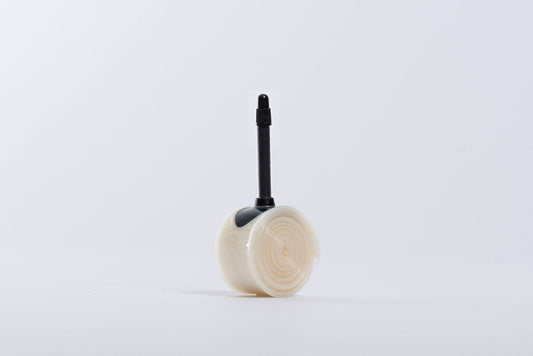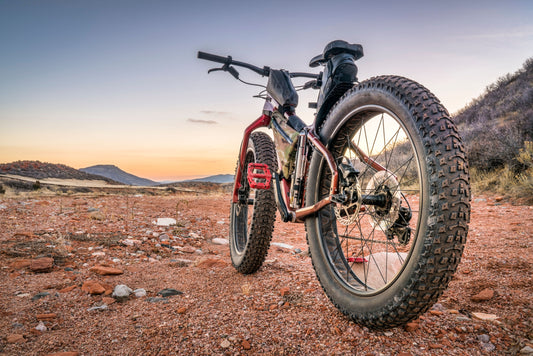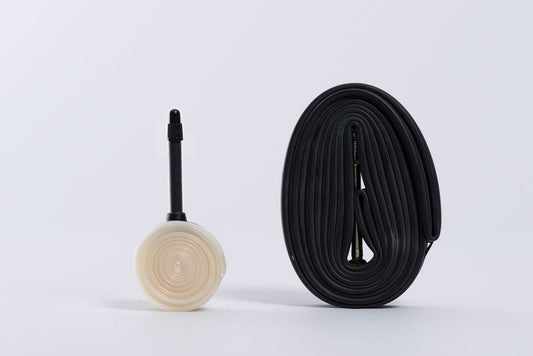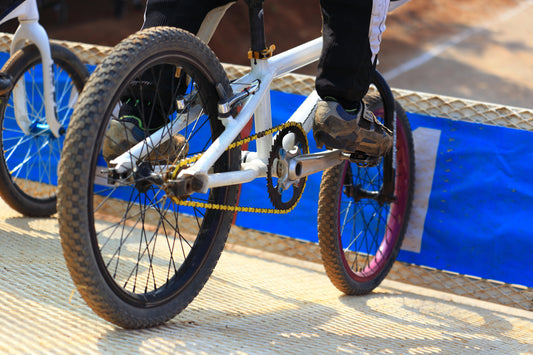In modern times, most cyclists think they only have the option between inner tube systems or tubeless when many cyclists don’t know about TPU tubes. TPU tubes are a great in-between the two systems, giving you more performance with the hassle of using a sealant.
With TPU becoming very popular recently, we are getting asked many great questions, the most popular being, “What are the advantages and disadvantages of TPU inner tubes?” In this article, we will tell you everything you need to know.
- What Are TPU Tubes?
- The Pros Of TPU Tubes
- The Cons Of TPU Tubes
- Are TPU Tubes For You

What Are TPU Tubes?
TPU is short for thermoplastic polyurethane. It’s a special type of plastic that is used in industries such as medical, automotive, and many others. It can be made to be very durable, lightweight, flexible, and incredibly resistant to abrasive materials.
An inner tube is a bicycle component that goes inside the tire itself. This is what gives the tire its shape, and this breaking is the main cause of a flat tire and the most common bike breakdown possible.
So, using TPU, we can make a much better inner tube that will not only last longer but do a better job and even help protect you from punctures.

The Pros Of TPU Tubes
TPU inner tubes come with some amazing advantages, and they often surprise many people because they make a huge difference. Here’s what you can expect from using TPU inner tubes.
Lightweight
The first and biggest difference you are going to notice is that they are much lighter. Your typical butyl inner tube on a road bike is going to weigh around 180g, while a TPU inner tube is going to weigh as little as 40g.
This means you are taking a total of 140g off each wheel. That’s 280g in total off the bike, and coming off the wheels makes a big difference and can be felt under acceleration. A big subject in cycling is marginal gains, but TPU is a major gain.
Less Rolling Resistance
Next up is rolling resistance. Rolling resistance is a force that opposes the forward motion of an object, and in the case of an inner tube, it’s how it affects the tire. TPU tubes offer low rolling resistance compared to butyl and other types.
Although only a small gain of around 5 watts, it does make a big difference when racing or on long rides. If you enjoy going fast and want all the advantages possible, then they will be a perfect upgrade for your bike.
More Tire Choices
Another fantastic advantage of TPU tubes is you get many more tire choices. Unlike tubeless, where you have to go for tubeless-ready tires with TPU, you can use pretty much anything provided that is designed to work with an inner tube.
This can help you keep costs down when doing a lot of miles, but if you are on a bikepacking trip and rip a tire, it’s easy to replace from any bike shop.
Easy Assembly
When upgrading your bike to tubeless, you need to consider many factors. Converting your wheels to tubeless, having the correct tires, a boost pump to set them up, and even ensuring you have the correct valves.
TPU tubes are much easier. All you have to do is install them like you would an inner tube if you had a puncture. This does take a lot of hassle out of the process, making it one of the most accessible upgrades.

Size
Then we have size. TPU tubes are very small and take up roughly 30% of a typical inner tube. Not only does this mean you can carry more spares, but it also means there's less weight in your saddlebag or rear jersey pockets.
Better Puncture Protection
TPU tubes can offer better protection than your typical butyl tubes. They are much more durable, meaning when something gets through the tire itself, it has to work harder to break down the wall of the inner tube.
Although it might not save you every time, it takes a lot more effort for a thorn or a piece of flint to get through TPU. Many TPU users find themselves checking their tires after a ride and often finding debris that they were surprised hasn’t caused any issues.
Compared to a latex tube or standard butyl tubes it can be a game changer and let’s be honest nobody likes a puncture.
Recyclable
Finally, we have my favorite Pro, and that’s the fact they are recyclable. Butyl tubes, after being used, cannot easily be turned into other goods and often end up in landfills. TPU, on the other hand, can be recycled into another tube or piece of specialist equipment.

The Cons Of TPU Tubes
Although TPU tubes are fantastic, they do have a few drawbacks which are important to speak about. Here’s what you need to know.
Cost
TPU tubes are much harder to manufacture than butyl inner tubes and, because of this, are generally more expensive. A good TPU tube costs anywhere between $25 and $60.
It’s important to understand that TPU tubes offer much more performance and are very durable compared to a butyl rubber tube. If they were cheap to manufacture, we would all be using them. Performance does cost more.
Harder To Repair
Many cyclists think that TPU tubes cannot be repaired, but they can. Unfortunately, the patches are more difficult to stick, and doing this on the roadside isn’t always ideal. It doesn’t mean they can’t be repaired, but it might be easier to put another tube in and repair the original when you get home.
Compatibility
Then we have compatibility. If you were using butyl tubes and didn’t have the exact size (2-4c off), you would probably be alright in an emergency. With TPU, you really need to be using the correct size as it doesn’t expand quite like a butyl tube.
Another question of compatibility comes in the form of rim and disc brakes. Many cyclists think TPU can't be used on rim brakes when they couldn’t be more wrong. Our TPU tubes certainly can be used with both.

Are TPU Tubes For You?
TPU tubes are an excellent replacement for standard inner tubes. They improve reliability, performance, and save you space helping you carry more spares. They are fantastic for road and gravel cycling as a replacement for butyl and other inner tube types.
If you are mountain biking, tubeless does have just as many advantages, but lots of MTB enthusiasts carry them as a spare TPU inner tube in case they get a large rip or a tear in their tire, making the tubeless obsolete.
A Final Note
TPU tubes are a great upgrade to your bike. They add great performance and can be installed at home without any specialist tools. We highly recommend them. They might not be the cheapest, but they add amazing value for what you're spending.
This is why so many cyclists choose them over standard butyl and latex tubes. TPU just offers something else and it’s a game changer.
If you enjoyed this article, you might like TPU Vs Latex Inner Tubes, TPU Vs Butyl, and TPU Inner Tubes: A Comprehensive Guide.















